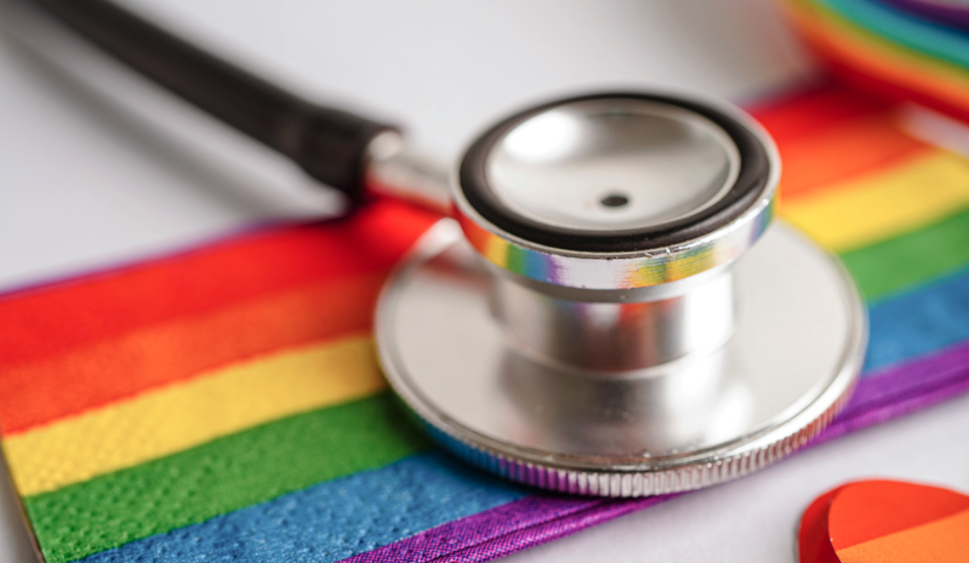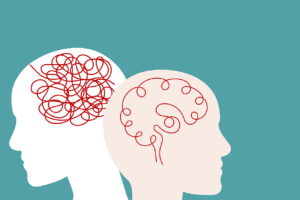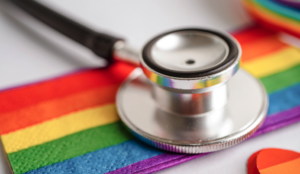
Enhancing healthcare communication for LGBT+ inclusivity
On Nov. 6, 2023, Colorado State University’s Diverse-OT Club welcomed Assistant Professor Michelle LeRoy from the Department of Occupational Therapy for a guest presentation about the significance of inclusive language for future occupational therapists.
“Using inclusive language is important because it is a simple and effective way to indicate that you are a safe person, and/or a provider who will respect the people around you and the diverse identities they hold,” LeRoy said.
In this blog, we will discuss how rural areas particularly benefit from using inclusive language and explore real-life examples of inclusion in healthcare facilities.
LGBT+ people living in rural areas
According to a recent report by the Movement Advancement Project, inclusive language can especially support lesbian, gay, bisexual, or transgender+ (e.g., pansexual, queer, fluid, asexual) people living in rural areas, as rejection is more likely to be amplified within interconnected rural communities. In the U.S., there are 3 million LGBT+ people living in rural areas, many of whom have difficulty receiving medical care. AARP’s research underscores the disparities, revealing that while 48% of LGBT+ adults in urban settings have access to LGBT+ informed healthcare, only 11% of those in rural areas do. Concerns about discrimination further deter many transgender adults from seeking medical assistance. These findings demonstrate that inclusive initiatives in rural health facilities are needed to support the health of LGBT+ people.
Examples of inclusion in healthcare facilities
There are several methods healthcare facilities can implement to promote inclusiveness. First, healthcare facilities can visually affirm support for LGBT+ individuals by displaying a sign in waiting rooms and exam areas bearing a statement like, “This office appreciates that diversity of human beings and does not discriminate based on race, age, religion, ability, marital status, sexual orientation, sex, or gender identity,” as endorsed by the American Medical Association. Additionally, healthcare facilities can place educational brochures on magazine racks and tables that focus on health risks important to LGBT+ people.
Intake forms can also be indicators of an LGBT+ friendly medical facility. Those forms that request both a chosen name and a given name for health insurance purposes demonstrate sensitivity to the challenges individuals may face when transitioning away from their legal name. Intake forms can also include an unlabeled, gender-neutral diagram of the human body, as advocated in the National LGBT Health Education Center report, where patients can mark any areas of pain or concern without the need for anatomical terms. This accommodation is particularly beneficial for individuals who have undergone gender-affirming surgery, mastectomy, or other procedures related to sexual organs.
Currently, many intake forms only ask whether a patient is male or female. However, intake forms can expand questions on sex and gender to approach a patient’s health more holistically. Intake forms can ask patients their sex assigned at birth, gender identity, gender expression, physical attraction, and emotional attraction. These questions recognize that not all people fit historically binary gendered terms, such as male and female. For example, a person may identify their gender as non-binary, but express themselves by wearing feminine clothing. A person may also be sexually attracted to men while having emotional attractions to individuals of all genders. Visual cues are one way to support LGBT+ people in healthcare; however, verbal language is also important.
Verbal language
Healthcare providers can signify they are a safe person to deliver medical care for LGBT+ people through the use of inclusive language. A healthcare provider who introduces themselves with their pronouns demonstrates that they understand the importance of affirming and respecting gender identities. Providers can further support inclusion by phrasing questions in a manner that considers all genders and sexual orientations. For example, instead of asking a patient if they are married, or if they have a girlfriend or boyfriend, they can ask, “Are you in a relationship?” Additionally, terminology like “well-woman visit” can be replaced with “annual checkup.”
Using inclusive language requires intentional effort as society has habitually used heteronormative language for many years. In instances where a healthcare professional inadvertently uses language that makes a patient uncomfortable, they can offer a prompt apology and ask, “I’m sorry. I didn’t mean to be disrespectful. What terms would you prefer?” This allows patients to have autonomy over how they would like to talk about their health.
Inclusive language resources
This blog includes a few examples of inclusive communication. As language evolves, continuous education about inclusive terminology is important to ensure a safe environment for LGBT+ individuals within medical facilities. Listed below are resources that provide detailed explanations and examples of inclusive language:
- Affirming LGBT people through effective communication learning modules
- What are gender pronouns? Why do they matter?
- Inclusive language toolkits for telehealth, pediatric care, and sexual and gender health
- The Gender Unicorn: A guide on the terms gender identity, gender expression, physical attraction, and emotional attraction
ABOUT THE AUTHOR
Rachel Washburn is a senior majoring in health and exercise science with a minor in gerontology at CSU. She is currently working as a student ambassador at CSU’s Center for Healthy Aging.





